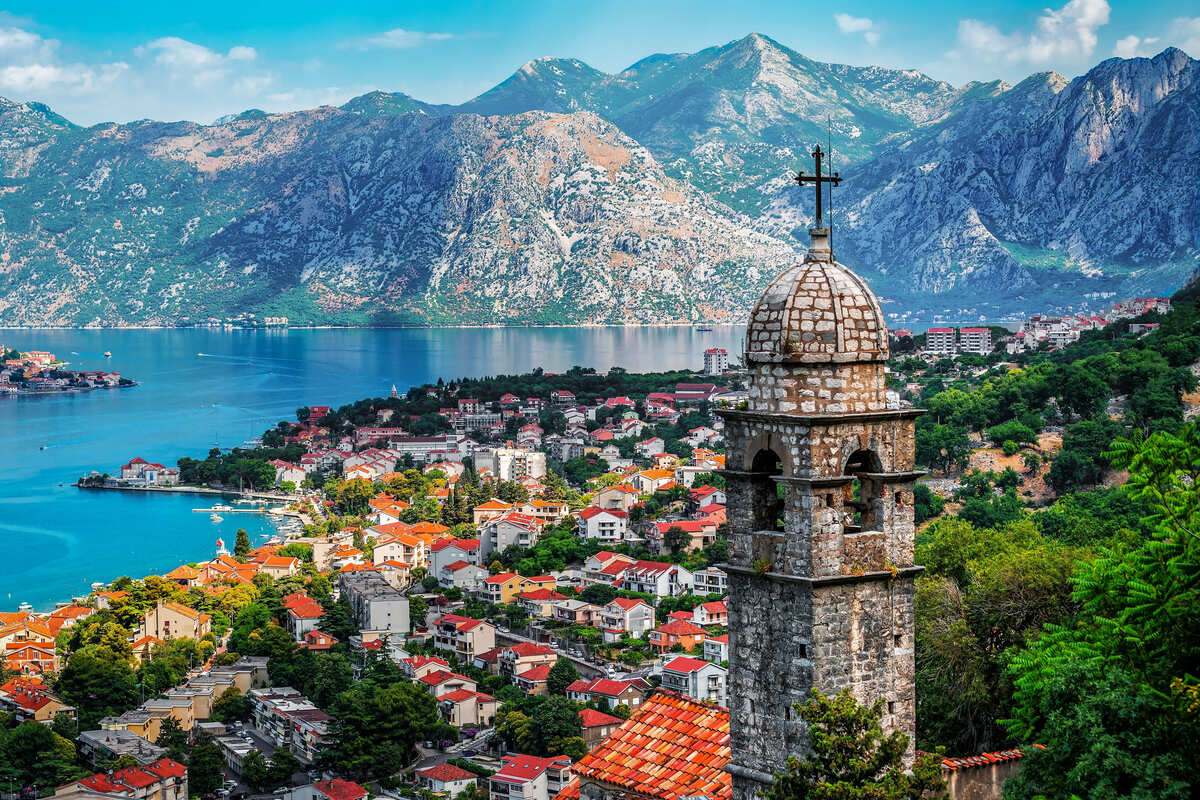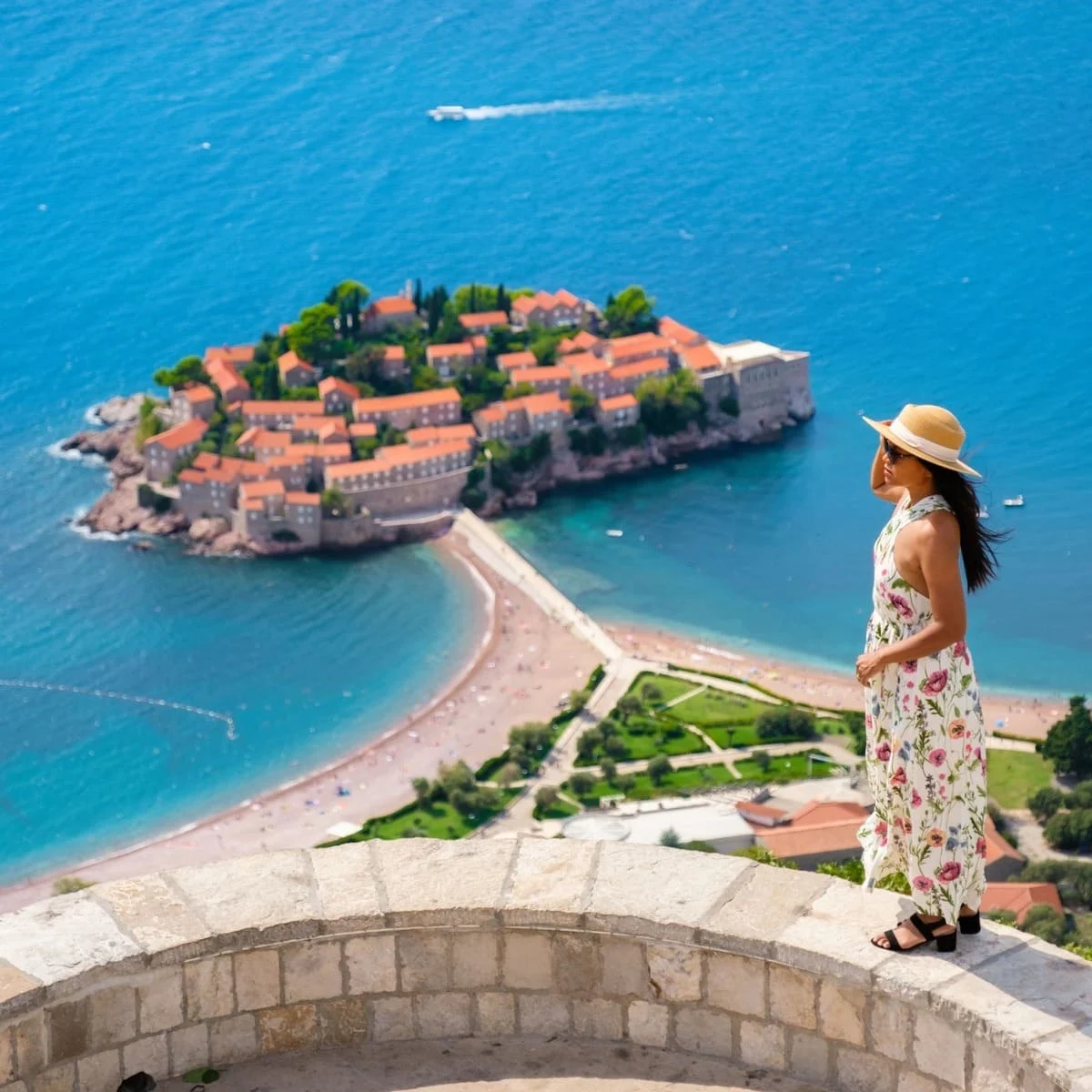
It’s been an exceedingly-long minute since you read a headline line this, but the moment has come. After 12 years, the European Union is gearing up to enlarge once more, and this time, it’s the paradisaical Montenegro being invited to join the club:
A small nation on the shores of the Adriatic, packed full of Old World wonders and postcard-ready beaches, Montenegro has raced ahead of other EU candidates like Bosnia-Herzegovina, North Macedonia, and Serbia, and now looks set to ascend to the Union in a couple of years.
So far, the country has managed its own borders, avoiding placing unnecessary red tape on international travel: they have so far refused to hop on the bandwagon and slap an eVisa requirement on Americans, nor have them give their fingerprints.
On top of that, Montenegro’s visa policy is notoriously more lax than the EU’s. Soon enough, this could all change, impacting all travelers:
Montenegro Could Be An EU Member By 2027


This is no baseless claim or unfounded rumor. It’s coming straight from the horse’s mouth.
According to the European Commissioner for Enlargement Marta Kos, Montenegro is a ‘leading candidate’ for accession to the European Union. In her own words, the accession process should be completed sometime between late 2026 and late 2027.
That’s only two years at the latest.
Indeed, Montenegro is the EU’s lowkey favorite when it comes to enlargement, due to its extraordinary engagement in advacing the process compared to most of its neighbors:
In order to enter the EU, a country must ‘open’ and ‘close’ a total of 33 ‘chapters’. Think of these as a checklist of rules and standards pertaining to matters like the rule of law, the strengthening of democratic institutions, anti-corruption reforms, fishery, and many more.
A chapter is only ‘closed’ once the candidate country has met all its requirements. The EU will ratify an accession treaty only after all 33 chapters have been closed.
We won’t get into detail here as this part is unlikely to be of interest to you as a traveler, but what you should know is that Montenegro has already opened all 33 chapters, and closed a total of 7 as of August 2025.
This may not seem like a lot, but let’s take a look at the chart below and how Montenegro fares compared to its counterparts:
A Look At Montenegro’s Impressive Progress


| Candidate country | Start of negotiations | Chapters opened | Chapters closed | Completion percentage |
| Montenegro | 2012 | 33/33 | 7/33 | 21.2% |
| Albania | 2022 | 24/33 | 0/33 | 0% |
| Serbia | 2014 | 22/34* | 2/34* | 5.9% |
| Georgia | Yet to start negotiations | 0/33 | 0/33 | 0% |
| Moldova | 2024 | 0/33 | 0/33 | 0% |
| North Macedonia | 2022 | 0/33 | 0/33 | 0% |
| Ukraine | 2024 | 0/33 | 0/33 | 0% |
| Bosnia-Herzegovina | Yet to start negotiations | 0/33 | 0/33 | 0% |
| Turkey | 2005 | 16/33 | 1/33 | 3% |
| Kosovo (Potential candidate) |
Yet to be granted candidate status | – | – | – |
*Serbia is subjected to satisfy 34th set of requirements during its accession treaty, relating to the normalization of relations with Kosovo
Elaborating on her earlier statement, Kos indicated she could see ‘two to three’ accession negotiations completed by the end of her mandate in 2029, with Montenegro being the obvious frontrunner.
She urged caution, however, as a prerequisite for ratifying an accession is that all EU member states agree to it, even after all chapters have been closed.
In that regard, Montenegro seems to have widespread support in the European Union, which could help its case. Nevertheless, it’s a lengthy process, and it can drag on for years, if not decades.
It’s Getting There… Slowly But Surely


The painfully-slow pace of negotiations has been criticized by North Macedonian Prime Minister Hristijan Mickoski himself, who added he hopes other countries seeking to join the Union ‘will not have the same experience’ as his country.
North Macedonia has been an official candidate for EU membership since 2005, while it’s only managed to start negotiation talks in 2022, and at this point, no chapters have been opened or closed.
When it comes to Turkey, they applied as early as 1987.
In Montenegro’s case, candidate status was granted only in 2010, much later, making their faster-paced progress all-the-more encouraging.
That being said, it all depends on how Montenegro performs in negotiations in the coming year. More optimistic projections point to full EU membership by late 2027, while less-optimistic ones favor the 2030–2032 deadline as more realistic.
How Exactly Will Montenegro’s EU Membership Impact Travelers?


An accession to the European Union will bring significant changes for Montenegro and Montenegrins.
As the 28th EU member state, Montenegro will enjoy unfettered access to the European Single Market, and its citizens will be able to travel, study, and reside freely, without applying for visas, across much of the European continent.
That’s great news for them. But what about travelers?
This is where it gets tricky:
Montenegro Will Start Fingerprinting Americans


On October 12, 2025, the EU is set to introduce its Entry-Exit System (EES), a new computer system that will help border agents keep record of travelers entering and leaving the member states. It will replace manual passport stamps, and tighten border checks overall.
Sounds fair enough, until you read in between the lines, and find out it will actually involve giving your fingerprints and other biometric data. Be prepared for longer wait lines at passport control starting this fall.
The thing is, as Montenegro isn’t a part of the EU, it is not required to operate under the EES: flying to Montenegro, Americans are issued a simple stamp, and can often just breeze through the border with minimal questioning.
Should Montenegro join the EU, it would be legally required to adopt the EES, which means it would also start fingerprinting foreign arrivals.
Americans Will Need A Digital Entry Permit To Enter Montenegro


Similarly to the EES, the ETIAS is an EU-wide initiative. Officially named an Electronic Travel Authorization, it’s essentially a $23 travel permit you must apply prior to flying to Europe.
Though not yet in place, the ETIAS system is scheduled to go live in 2026, and it will completely change how Americans (and other current visa-exempt travelers like Canadians and Brits) travel to the Old Continent.
Unless you have an ETIAS in your name, you will not be allowed to board a flight to any EU member states, and should you try to cross a land border from a non-EU country into the European Union, you’ll be refused admission.
Needless to say, ETIAS do not apply in Montenegro, but you know, once it’s a full EU member, it will be a different story.
Oh Yes. That Schengen Thing


If you’re unfamiliar with Europe’s complicated travel rules, perhaps you haven’t been introduced to the Schengen Area.
It’s a border-free zone that covers much of the continent, where customary passport checks usually do not apply, and crossing from one nation to another feels as smooth as going from California to Arizona.
Again, sounds great on paper, but did you know that, as an American tourist, you are only allowed to stay in the Schengen Area for 90 days out of any 180-day period?
‘Sure, whatever, 3 months is enough time‘… hum, we’d beg to differ?
Most countries worldwide allow tourists to stay between 90 to 180 days as visitors before they must leave. In the Schengen Area, the 90-day rule applies to 29 countries all at once:
The Issue With Schengen’s Restrictive 90-Day Rule
If you’ve spent 30 days traveling around Italy, you then have ‘only’ 60 more days to use up in 28 other European countries (it could be France, Italy, Spain, Croatia) within the next 6 months.
When put that way, it sounds a lot more limiting, right?
Luckily for Americans, Montenegro is not in Schengen at the minute, and they are granted a 90-day stay independently of any time spent in other European nations.
Fast forward a few years, and Montenegro is a full EU and Schengen member, and you will have to watch your clock here, too, pal.
It’s important to note that Schengen membership isn’t automatic upon EU accession, so it could be quite some years down the line until Montenegro enforces the 90/180 rule, so you’re good to go for now.
It Will Have A Stricter Visa Policy


This last bit won’t particularly affect Americans, but it could negatively impact hundreds of millions of other travelers worldwide.
Right now, Montenegro has the freedom to define its own visa policy, and it’s notoriously more generous than that of the European Union:
Most notably, Russian and Turkish citizens can enter Montenegro without getting visas, unlike in the EU, where they are subject to a gruelling visa application process.
As an EU member state, Montenegro will be legally required to fully align its visa policy with the rest of the Union. This means it’s highly likely a number of foreign citizens who can currently travel there with their passports only, will be made to get a visa.
Use This Free Tool To Check Entry Rules Prior To Flying
We know, it’s a complex world to navigate as a traveler, but it doesn’t have to be!
With our new TOP Entry Requirement Checker, you can verify all the visa, and entry and stay rules that apply to you as a U.S. passport holder, traveling to over 190 destinations worldwide.
And the best part is, it’s completely free to use! Be our guest.
Vinicius Costa
Vini, our senior lead writer at Travel Off Path, has over 60+ countries under his belt (and currently weaving tales from Paris!), and a knack for turning off-the-beaten-path experiences into informative stories that will have you packing your bags.
The Travel Off Path Advantage: Your Travel Toolkit
Subscribe To Our Latest Posts
Enter your email address to subscribe to Travel Off Path’s latest breaking travel news, straight to your inbox.
Please visit:
Our Sponsor
